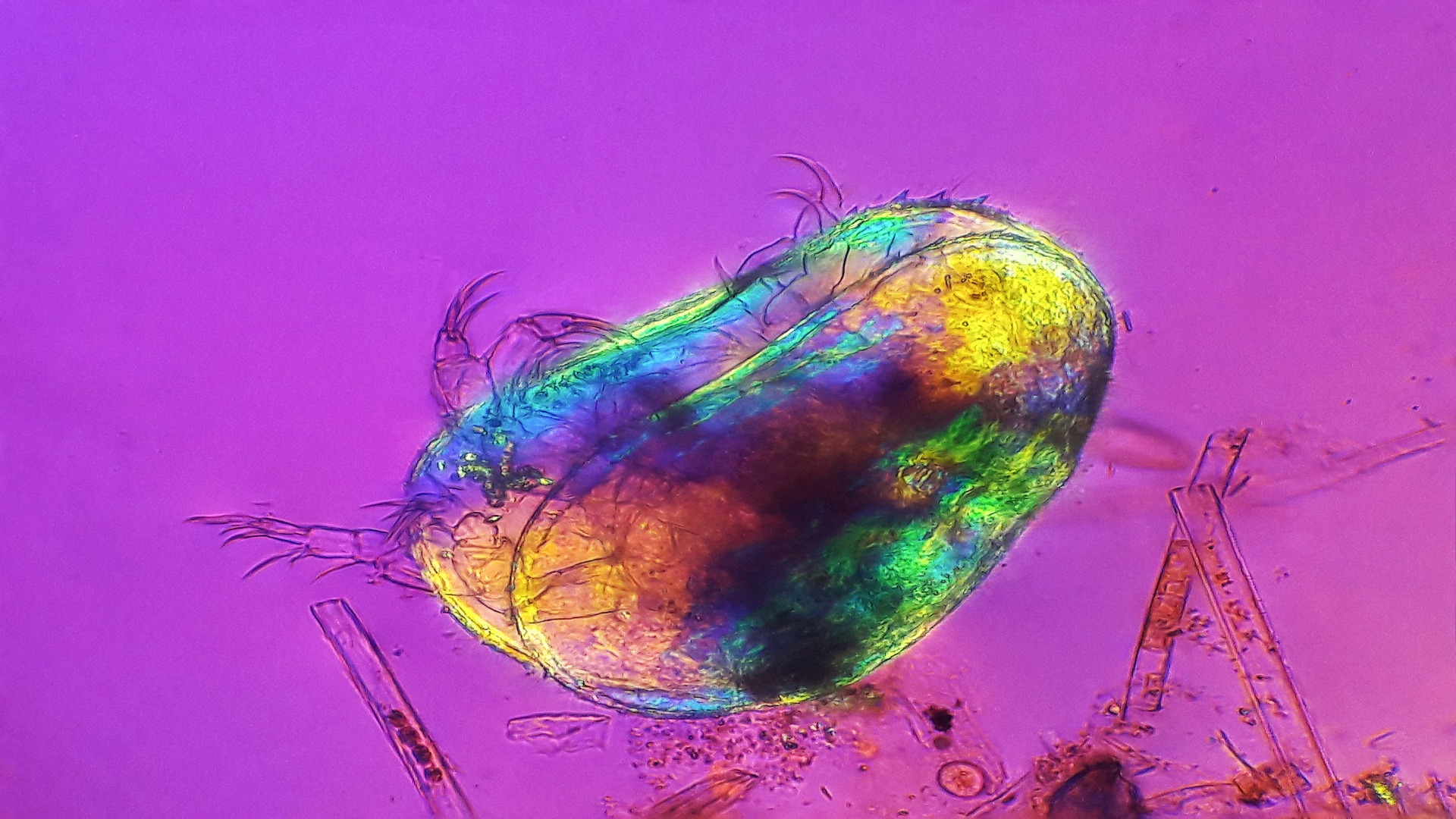The oldest penis in the world, as it turns out, belongs to an ancient crustacean astonishingly well-preserved in volcanic ash 425 million years ago that might anatomically teach us that sex and breathing are pretty closely related.
More spectacularly, the ostracod, a class of crustaceans that has survived the test of time, shows that the anatomy of this genus hasn’t changed much in an unbelievable amount of time, as per Science. In a world that evolves to survive, in other words, this crustacean opted to stay the same.
When Professor Siveter discovered it on a rock in 2003, the ash had saved the animal’s hard and soft tissue from disintegration or decay making the specimen “an exceptional preservation,” according to Professor Siveter in ABC News.
However, at 1 mm long, this tiny crustacean packed a big surprise. Not only did he discover an impossibly intact and ancient fossil but a penis, a rare feature as soft tissue, which ended up being quite large, up to a third of the animal’s total volume, according to ABC’s recent coverage.
“This fossil had all the appendages intact. We had the gills that the animal used to breathe. We had the eyes and we had the penis, which was lovely, because it’s very rare that you can gender fossils,” he was quoted in ABC. The creature was named appropriately, Colymbosathon ecplecticos, which means “outstanding swimmer with large penis” in Greek.
Creating a 3D model of an ancient crab with a penis
The study was published in Science in 2003. All because Professor Siveter happened to collect rocks in the West of England as a paleontologist. Using a sophisticated and painstaking technique, they made a digital model of the ostracod by grinding the rock away, according to Science, and photographing polished cross-sections to then reconstruct the body in 3D.
This tiny but well-endowed crustacean rose to fame for having the oldest penis that ejaculates, based on what they know already about them, equally impressively large sperm at 10mm long, Professor Siveter told ABC.
“The copulatory organ is large and stout,” the study described, “projects anteriorly, and has lobelike flanks distally. The furca protrudes out of the valves; both furcal lamellae have a row of at least four (up to perhaps six or seven) curved claws.
A sinuous fingerlike process of unknown homology projects from the proximal posterior part of the furca. Six tightly nested pairs of broad, curved, thin lamellae (gills) are attached to the posteroventral part of the trunk and wrap around its posterior one-third); they are better preserved on the right side.“
They use special organs called Zenker’s organs to pump it out of their body.
The earliest direct evidence of a respiratory-cum-circulatory system
As stated in the study, ostracods are a class of crustaceans still in existence, also known as seed shrimp. They are called, rightfully, one of the most successful aquatic crustacean groups in the history of the world, with 8,000 species still living and breathing with gills, though 33,000 have been identified.
This ancient fossil in particular, along with having the oldest penis ever found on a male, also has “the only known undoubted gills in a fossil ostracode and provides the earliest direct evidence of a respiratory-cum-circulatory system in the group,” as per the study.
And hence, breathing and fornicating seem to be the one and the same for the ancient crab that survived the test of time.
ABOUT THE EDITOR
Maria Mocerino Originally from LA, Maria Mocerino has been published in Business Insider, The Irish Examiner, The Rogue Mag, Chacruna Institute for Psychedelic Plant Medicines, and now Interesting Engineering.

Dr. Thomas Hughes is a UK-based scientist and science communicator who makes complex topics accessible to readers. His articles explore breakthroughs in various scientific disciplines, from space exploration to cutting-edge research.








